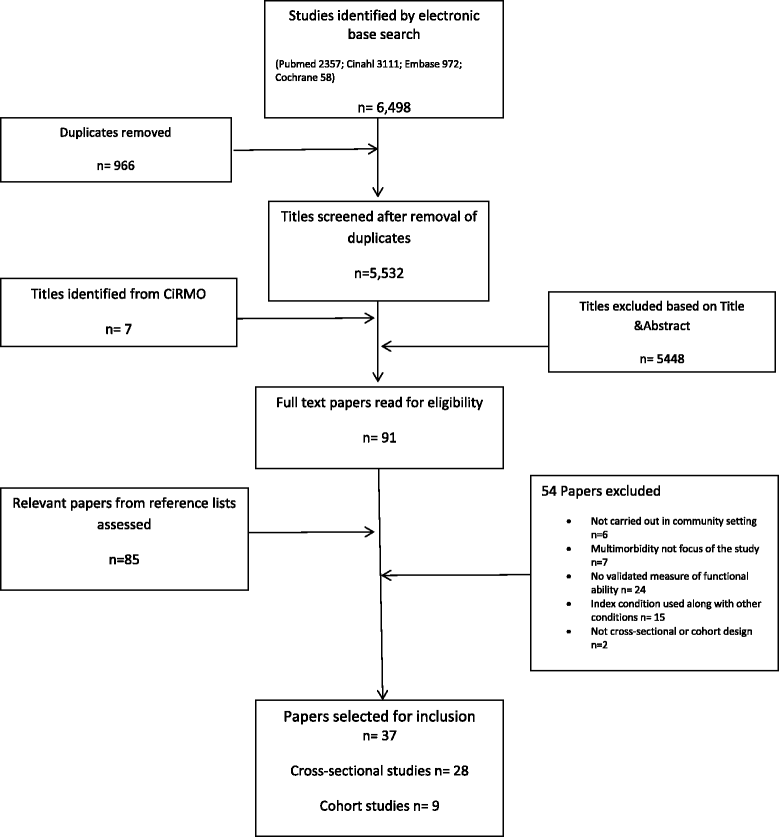Multimorbidity and functional decline in community-dwelling adults: a systematic review
- PMID: 26467295
- PMCID: PMC4606907
- DOI: 10.1186/s12955-015-0355-9
Multimorbidity and functional decline in community-dwelling adults: a systematic review
Abstract
Background: Multimorbidity affects up to one quarter of primary care populations. It is associated with reduced quality of life, an increased risk of mental health difficulties and increased healthcare utilisation. Functional decline is defined as developing difficulties with activities of daily living and is independently associated with poorer health outcomes. The aim of this systematic review was to examine the association between multimorbidity and functional decline and to what extent multimorbidity predicts future functional decline.
Methods: A systematic literature search (1990-2014) and narrative analysis was conducted.
Inclusion criteria: Population; Community-dwelling adults (≥18 years), Risk; Multimorbidity defined as the presence of ≥2 chronic medical conditions in an individual, Primary outcome; Physical functional decline measured using a validated instrument, Study design; cross-sectional or cohort studies. The following databases were included: PubMed, EMBASE, CINAHL, the Cochrane Library and the International Research Community on Multimorbidity (IRCMo) publication list. Methodological quality assessment of included studies was conducted with a suitable risk of bias tool.
Results: A total of 37 studies were eligible for inclusion (28 cross-sectional studies and 9 cohort studies). The majority of cross-sectional studies (n = 24/28) demonstrated a consistent association between multimorbidity and functional decline. Twelve of these studies reported that increasing numbers of chronic condition counts were associated with worsening functional decline. Nine cohort studies included 14,133 study participants with follow-up periods ranging from one to six years. The majority (n = 5) found that multimorbidity predicted functional decline. Of the five studies that reported the impact of increasing numbers of conditions, all reported greater functional decline with increasing numbers of conditions. One study examined disease severity and found that this also predicted greater functional decline. Overall, cohort studies were of good methodological quality but were mixed in terms of participants, multimorbidity definitions, follow-up duration, and outcome measures.
Conclusions: The available evidence indicates that multimorbidity predicts future functional decline, with greater decline in patients with higher numbers of conditions and greater disease severity. This review highlights the importance of considering physical functioning when designing interventions and systems of care for patients with multimorbidity, particularly for patients with higher numbers of conditions and greater disease severity.
Figures
References
-
- Van den Aker M, Buntinx F, Metsemakers JF, Roos S, Knottnerus JA. Multimorbidity in general practice: prevalence, incidence and determinants of co-occurring and recurrent disease. J Clin Epidemiol. 1998;51(5):365–75. - PubMed
-
- WHO . Global status report on noncommunicable diseases 2010: description of the global burden of NCDs, their risk factors and determinants. Geneva: World Health Organization; 2011.
Publication types
MeSH terms
LinkOut - more resources
Full Text Sources
Other Literature Sources
Medical



